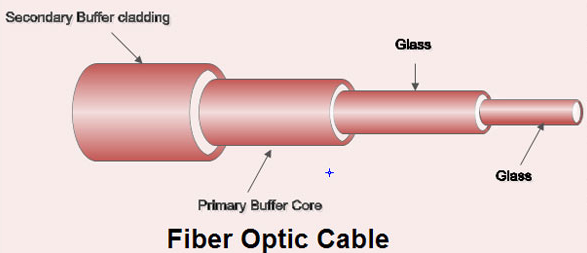- Related articles
- All Cisco MA-SFP-10GB-LR's information (List price, Specs, Datasheet PDF, Compatibility ma
- Optical Transceivers for Cisco N2K-C2224TP Switch
- Optical Transceivers for Cisco SG300-52MP-K9-EU Switch
- EoS and EoL Cisco 2960-S Series and 2960-SF Series Switches
- Applicable to 40GBase-eSR4 Standard Optical Transceiver Models
- What is a Laser Diode?
- All Cisco DWDM-XFP-32.68's information (List price, Specs, Datasheet PDF, Compatibility ma
- All Cisco XENPAK-10GB-LW's information (List price, Specs, Datasheet PDF, Compatibility ma
- What Is Dual Port Network Card?
- The difference between XENPAK and XFP

Introduction
The innovation of Optical Fiber Cable for the effective communication has been of great help throughout the communication industry and therefore, there are numerous benefits associated with it. First and foremost, the Optical Fiber Cable guarantees the users security of the data being transmitted because they don’t easily link out the data. Consequently, they are faster with internet connections equaling100 Mbps in downstream. Other Optical Fiber Cable transmits data at speed much higher than 1-10 Gbps.

Benefits of Optical Fiber Cable
1. Bandwidth - Fibre optic cables have a much greater bandwidth than metal cables. The amount of information that can be transmitted per unit time of fiber over other transmission media is its most significant advantage. With the high-performance single mode cable used by telephone industries for long distance telecommunication, the bandwidth surpasses the needs of today's applications and gives room for growth tomorrow.
2. Low Power Loss - An optical fiber offers low power loss. This allows for longer transmission distances. In comparison to copper; in a network, the longest recommended copper distance is 100m while with fiber, it is 2000m.
3. Interference - Fibre optic cables are immune to electromagnetic interference. It can also be run in electrically noisy environments without concern as electrical noise will not affect fiber.
4. Size - In comparison to copper, a fiber optic cable has nearly 4.5 times as much capacity as the wire cable has and a cross-sectional area that is 30 times less.
5. Weight - Fibre optic cables are much thinner and lighter than metal wires. They also occupy less space with cables of the same information capacity. The lighter weight makes fiber easier to install.
6. Safety - Since the fiber is a dielectric, it does not present a spark hazard.
7. Security - Optical fibers are difficult to tap. As they do not radiate electromagnetic energy, emissions cannot be intercepted. As physically tapping the fiber takes great skill to do undetected, fiber is the most secure medium available for carrying sensitive data.
8. Flexibility - An optical fiber has greater tensile strength than copper or steel fibers of the same diameter. It is flexible, bends easily and resists most corrosive elements that attack copper cable.
9. Cost - The raw materials for glass are plentiful, unlike copper. This means glass can be made more cheaply than copper.
10. Because fiber-optic cables are both lighter and smaller in diameter than copper lines, they can be more easily produced and installed.
11. Fiber-optic systems use significantly less energy than copper lines and are thus immune to many dangers associated with the electrical current used in copper lines.
12. Fiber-optic communication systems can be used to transmit more information than copper cables and are well-suited for use with digital communications.
13. When compared to copper cables, fiber-optic cables are both immune to electromagnetic interference and produce no interference when operating.
14. Finally, fiber-optic lines are less expensive than copper cables, which can drastically reduce the cost of installing new lines or maintaining older ones.
Conclusion
Optical Fiber Cables completely changed the communication industry with numerous benefits as outlined above. Today, you can effectively communication with any one all over the world and pass your information within a minute. In other words, the Optical Fiber Cables have changed the world to a global village where you can communicate with anyone, anytime and anywhere.





































































